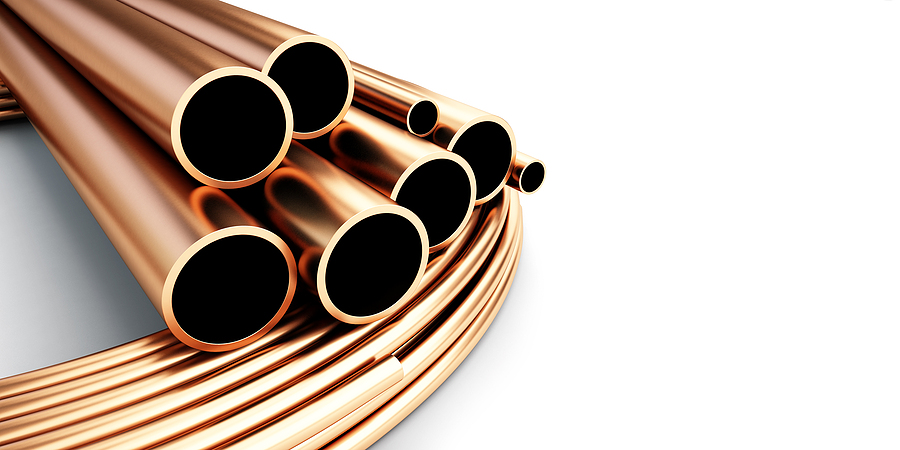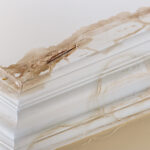A hacksaw is a handy tool for repairing and cutting metal fittings. On the other hand, copper is a ductile and lightweight material, and at some point during repairs, you will have to cut copper pipe with a hacksaw.
Copper pipes are also convenient fittings that serve a lot of purposes in the construction industry. Follow the latest helpful updates about the construction, HVAC, and DIY industry at drrrunkshopping.com . I found the blog helpful for beginners.
However, there are quite a lot of handy tools used to cut copper pipes. But note that some of these toolswork more efficiently than others.
Copper pipes have their disadvantages. Below are three.
- Copper pipes will fail with temperatures exceeding 180◦
- Copper pipes cannot withstand salty and acidic water
- Copper tubes are susceptible. Meaning a copper tube will oxidize and tarnish.
How to Cut Copper Pipe with Hacksaw:
When a copper pipeis damaged, you should cut it using the necessary tools – In this case, we will go with a hacksaw.
Step 1: Choose a hacksaw with the correct teeth
Hacksaw blades come in different designs. These designs, however, differ in teeth size, teeth pitch, blade width, gullet depth, andrelief angle.
Check the table below for further emphasis.
| Teeth per inch or (per 25mm) | Used for cutting |
| 14 | Brittle metals and Aluminum |
| 18 | General workshop cutting |
| 24 | 5-6mm steel plates |
| 32 | Tubes and hollow sections |
The correct hacksaw for cutting copper pipes, therefore, is the 32teeth per inch (25mm). These blades are known as Low Teeth per Inch (Low TPI).
Step 2: Wipe the copper pipe.
Using a clean and dry cloth, wipe the copper pipe and draw a mark. Although, marking is a challenge for tarnished pipes. Use vinegar and baking soda solution to clean the copper surface.
Step 3: Marking the copper pipe
The next step is marking the copper pipe. Use a marker and piece of tape to mark the cutting point.
How to mark a copper pipe
- Measure the length you want to cut.
- Cut a sizeable amount of tape.
- Wrap the tape around the pipe’s circumference, making sure that the top and bottom of the tape align.
- Use a marker to draw a line that is perpendicular to the tape
- Remove the tape.
Step 4: Prepare for the cutting process.
In this step, you shouldwear safety gloves,use the correct hacksaw frame& blade, and safety goggles (if needed) for a much cleanercut and faultlessoutcome.
Currently, there are different hacksaw hand frame designs.Sochoose a hacksaw frame that has a solid handle for a comfortable and firm grip. A handle that has a 5-inches long opening, 2.5-inches wide, and a 15◦ slanted angle is ideal for cutting pipes.
Tune the hacksaw’s tension screw until the blade’s tension force is firm enough.
Step 5: Clamp the copper pipe firmly with a clamp or vice
When cutting copper pipe with hacksaw, clamp the pipe to guarantee it securely stays in position. But note that there are many different types of table clamps.
So, adjust the clamp to the correct size. Additionally, let the mark sit close to the clamp or vice. DO NOT clamp the copper pipe with the mark far from the vice/clamp to ensure a stable fit.
Likewise, use enough force/clamping pressure when bracing the tube to avoid damaging the copper pipe with the clamping jaws.
Pro Tip:
- Support both ends of the pipe if you have a long pipe.
Step 6: Start the cutting process.
Before you begin, ensure the blade’s teeth/cutting edge is pointing forward.
- Next, hold the hacksaw into position with one arm and place your other thumb on the marked spot.
- Gently stroke the hacksaw backward (with your thumb still in the marked spot) to create a groove on the copper pipe.
- Continue stroking the hacksaw 4-5 times (while applying a considerable amount of pressure.)
- Next, firmly hold the hacksaw with either one or both arms(after getting a deeper cut.)
- Continue cutting the copper pipe until itis completely cut.
Remember:If there is friction during cutting, apply lubricating oil.
- Use a rotary tool or an abrasive brush to clean the edges of the copper pipe.
Pipe Cutter Vs. Hacksaw
Apipe cutter is a versatile tool that can cut different metals. Additionally, it is fast and leaves much cleaner and professional cuts than a hacksaw.
A hacksaw, on the other hand, is a simple hand tool that works perfectly for cutting vertical and diagonal cuts.
Both tools have their advantages and disadvantages. Below is a comparison table.
Pipe Cutter
| Pros | Cons |
| 1. Give much cleaner and neat cuts
2. A convenient and versatile tool 3. Easy to handle 4. Can cut many pipe materials 5. Portable tool |
1. The pipe cutting disk can become dull over time. |
Hacksaw
| Pros | Cons |
| 1. Easy to handle
2. Can cut many pipe materials 3. The grip is firm |
1. Not so convenient. Specifically in tight places.
2. Hacksaw cuts are oftenasymmetrical. 3. Not a safe alternative compared to the pipe cutter |
A pipe cutter has many advantages compared to a hacksaw.
Frequently Asked Questions
Q1: Can I cut copper pipe with a hacksaw?
A:Yes. You can cut a copper pipe with a hacksaw. However, the hacksaw needs to have the recommended blade.
Q2: Is it OK to cut copper pipe with a hacksaw?
A:Yes. It is okay to cut copper pipes with a hacksaw. A hacksaw that has the correct TPI (32 teeth per inch) makes precise cuts.Additionally, you should be familiar with the Dos and DON’T’S of handling a hacksaw.
Q3: How do you cut a copper pipe straight with a hacksaw?
A: To cut straight edges using a hacksaw, you should first mark a spot. Next,stick a masking tape or any other tape around the copper pipe where your mark is. Draw a perpendicular line against the edge of the tape and remove the tape. Gradually begin cutting the copper pipe as you follow the marked line.
Conclusion
The copper pipe cutting Procedure is a straightforward process if you have a precise guide. But one thing you should always remember is that the blade needs to be correct as well as the hacksaw frame.
Moreover, you need to understand how to make cleaner and more professional cuts using a hacksaw. A pipe cutter is also an efficient tool that should be praised. However, there are a few situations where the hacksaw is dominant.
Pro Tips:
- Fix the precise hacksaw blade in a jigsaw tool to make faster, cleaner, or angled cuts.
- After cutting a copper pipe, use a copper adhesive solution to clean both the blade and pipe.
The above how to cut copper pipewith hacksaw guide has looked at everything you should know before beginning the cutting process.
Image Source: BogStockPhoto.com (Licensed)
Related Categories: DIY, Reviews








